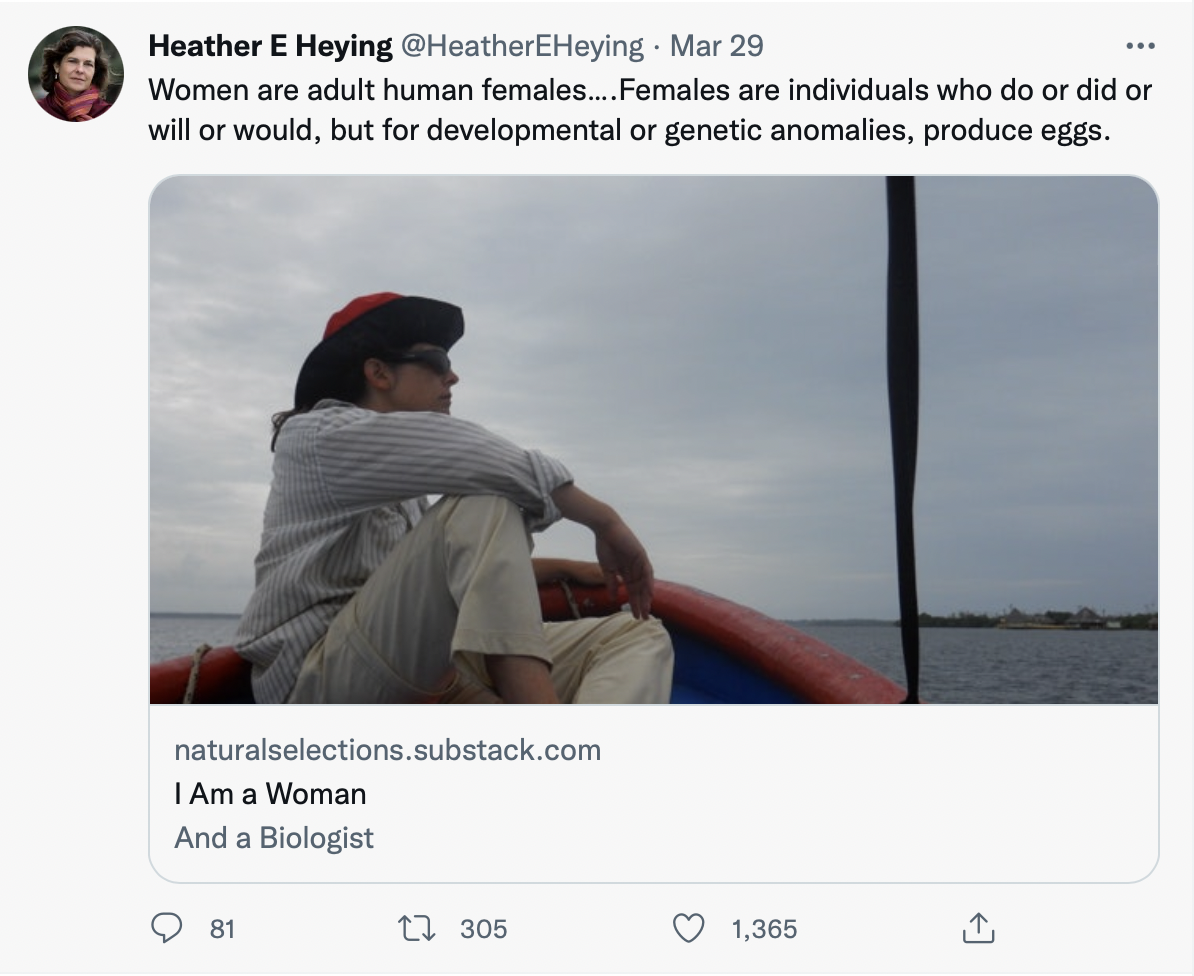Heather Heying offers this precise definition of woman in her article, I am a Woman and a Biologist. Here’s an excerpt:
Women are adult human females.
Adults are individuals who have attained the average age of first reproduction for their species. They have reached the age of maturity. The term adult applies across many species, and is used to distinguish them from juveniles, who are not yet capable of reproduction.
Humans are members of the genus Homo. Our relatives in the genus Australopithecus, now extinct, are sometimes categorized as human as well. Every individual Homo sapiens is a human.
Females are individuals who do or did or will or would, but for developmental or genetic anomalies, produce eggs. Eggs are large, sessile gametes. Gametes are sex cells. In plants and animals, and most other sexually reproducing organisms, there are two sexes: female and male. Like “adult,” the term female applies across many species. Female is used to distinguish such people from males, who produce small, mobile gametes (e.g. sperm, pollen).
It’s the definition of that last word—female—that will be difficult for some to accept.
Some people imagine that, because words are a social construct, so too, inherently, are the concepts that they describe. Some words do describe social constructs: offended, justified and controversy, for instance. These things have no reality in the physical universe, or if they do, that reality can be negotiated by social means.
Many words, however, do describe an underlying reality. Words like bulldozer, grasshopper, and woman.



What’s wrong with calling a transwoman a “transwoman”? Heying addresses this too: